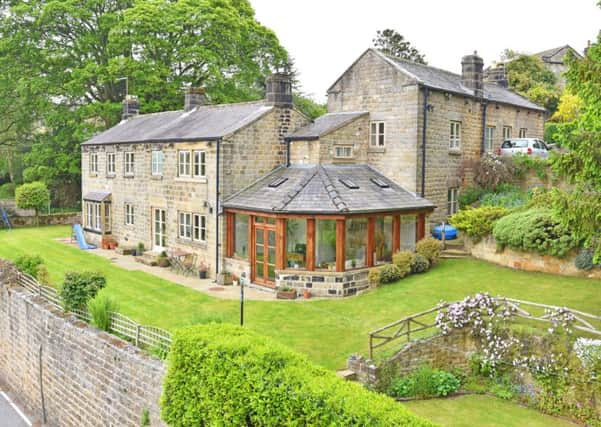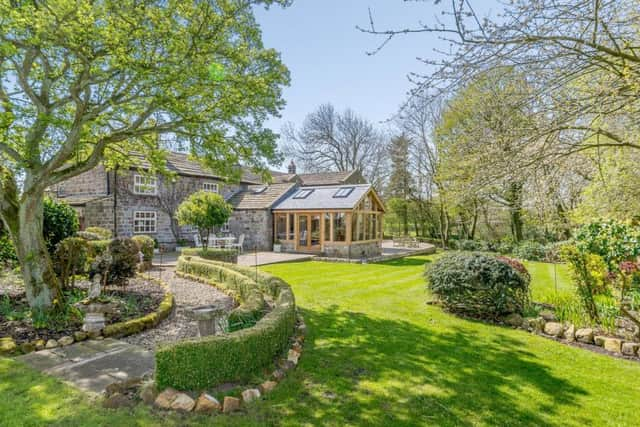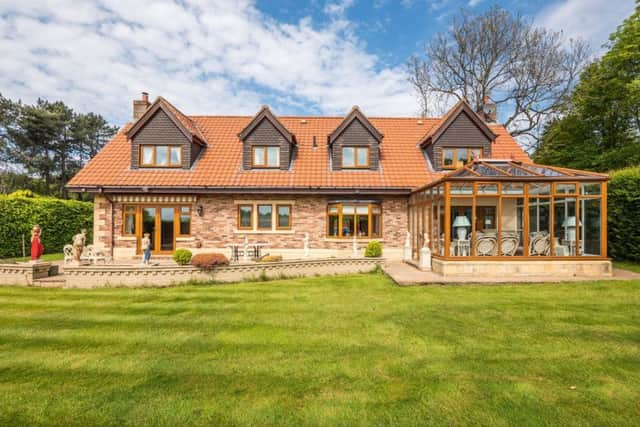Enjoy the great outdoors from the grand indoors, with a garden room


The trend really started with orangeries in the seventeenth century. These were originally glass-walled structures built specially for the cultivation of citrus trees, which in northern Europe need more light and warmth than they would get outdoors.
But it was soon realised that they made for a rather pleasant – and warm – place to sit, and Queen Anne used the orangery at Kensington Palace (which was built in 1704) for banquets and afternoon tea.
Advertisement
Hide AdAdvertisement
Hide AdAs the trend grew and glass became cheaper, the Victorian middle classes adopted and adapted the orangery and the conservatory was born.


Nowadays, the difference between the two can be hard to see, but on the whole, conservatories have more glass, while orangeries tend to have solid pillars and lantern roofs.
Over the last decade or two a third option has been recognised. The garden room is much like a conservatory, but often has a solid roof and is usually used as an integral part of the home, rather than as an adjunct to the main house.
This last point is important, because it means that garden rooms fit perfectly with the modern trend for open-plan living – which is why they have become so popular.
Advertisement
Hide AdAdvertisement
Hide AdTypically – but by no means always – a garden room will project off an open-plan dining-kitchen, providing a third area with a distinctive feel but a purpose shared with the rest of the whole.


If you like the sound of enjoying the great outdoors from the grand indoors, one of the following properties may be for you.
Lollybogs is a traditional Dales longhouse dating from the 17th century and has been meticulously renovated by the present owners. The main house has five bedrooms, four bathrooms, three reception rooms, study, kitchen and adjoining garden room. In addition, the Coach House provides a one-bedroom flat, workshop and garaging for around 10 cars, as well as storage space and games room or office above.
The property is set in 5.5 acres of land, with gardens, fountain, ha-ha and pergolas, as well as a barn, stables and equestrian land. Adjacent to the garden is a wood with a beck, natural bogs and a historic drovers’ bridge.
Advertisement
Hide AdAdvertisement
Hide AdWoodcock Cottage in Pannal, just south of Harrogate, is a sympathetic conversion of four 18th-century cottages belonging to Woodcock Farm, which dates back to 1769. It has five bedrooms, four bathrooms, a study, three reception rooms, and a large kitchen with utility room and garden room leading off it.
Outside, there are sloping lawns, a summerhouse and views over the village, plus garage and off-street parking.
Finally, Hookstone Gate is a spacious family home just around the corner from two of Harrogate’s best secondary schools, St Aidan’s (C of E) and St John Fisher (Catholic). It has five bedrooms, one with a kitchen area, making it ideal as an additional living room or games room. There are also two bathrooms, open-plan dining kitchen and lounge, boot room, utility room, study, two additional reception rooms, garden room, gardens and integrated double garage.